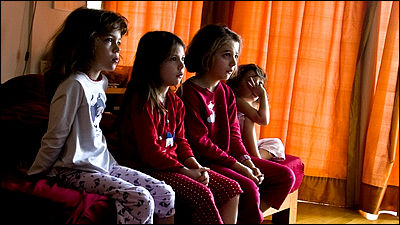Can science explain to us what "beauty" is?
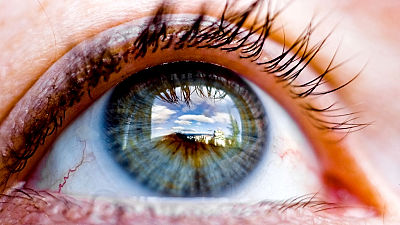
ByVladimer Shioshvili
It is very subjective to feel something as "beautiful", beauty is not scientifically spoken, but in recent years it has become increasingly important to study the relationship between "brain" and "art"Neuroanatomy"The academic that appears is emerging. When humans feel "beautiful", what is going on inside the brain, "The Aesthetic BrainAuthor and neuroscientist'sAnyan ChattasyMr. answered the interview.
Anjan Chatterjee talks about the neurology of creativity.
http://nautil.us/issue/20/creativity/can-science-tell-us-what-beauty-is
◆ What is aesthetic experience
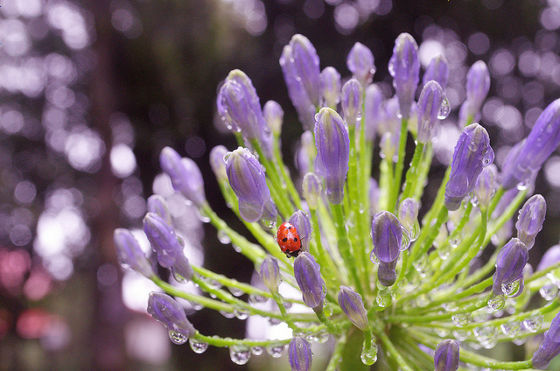
ByPriyambada Nath
Experience the value like beauty and beauty is "Aesthetic experience"is. People like beautiful things, and because they can get pleasure from beautiful things, many think that aesthetic experience is fun. However, pleasure can be obtained from favorite people next to me or eating delicious meals, but these are not aesthetic experiences.
In other words, while the aesthetic experience is pleasure, it can be said that it does not cause appetite or a utilitarian impulse. When I saw a wonderful painting and thought that it was "beautiful", at the same time I thought "It would be nice if you decorate it in a living room or an office" or "I think it is a wonderful invention" and at the same time think that this will impress a friend Or you may do. Although the above impression is certainly a wonderful experience, it is not an "aesthetic experience" because it involves desire.
People sometimes discuss "what is the purpose of art", but the purpose of art is in the art itself. To immerse in objects, art has no further purpose. "I can get not only art work but also nature's aesthetic experience, and I think many people have aesthetic experiences," Mr. Chattery said. A person is perfectly fascinated by a beautiful garden, at least it is one of the definitions of aesthetic experience.
◆ What is happening in the brain when an aesthetic experience occurs
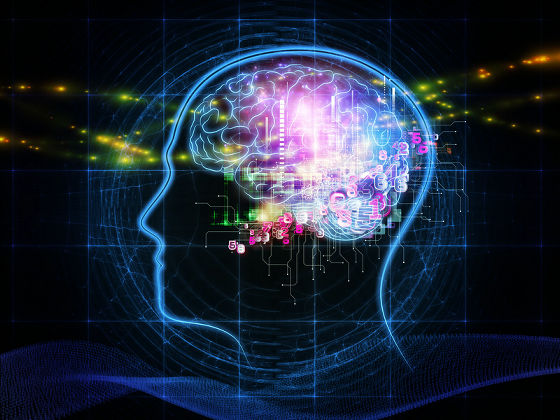
ByA Health Blog
When a human desire is satisfied, it brings a pleasant sensation to that individualReward systemHowever, there is an important network in the reward systemStriatumAnd frontal cortex,Amygdala,Islet cortexIt is a part such as.
Neuroscientists at the University of Michigan, Kent Berridge, have announced that there are two systems in these parts: wanting and liking. Because we basically want what you like and like preference you want, the two systems of wanting and liking work in conjunction with each other. But the wanting system and the liking system are similar. For example the wanting systemDopamineI will be driven by. Dopamine deficiency reduces movement of limbsParkinson's diseaseHowever, it can also reduce desire and motivation for learning as well as that. Meanwhile, the liking system is linked with pure pleasure experience. Included in cannabisCannabinoidYaOpioidIf you ingest, it will be high, but this is a powerful version of the liking system.
Many of our experiences involve a wanting system and a liking system, but since these are separate things, for example, a situation in which a drug dependent patient desires to stop drugs, "I do not like it but I want it" was born I will. Aesthetic experience is contrary to the case of drugs and the condition "I like it but I do not want it" happens.
Can science measure transcendental experience?
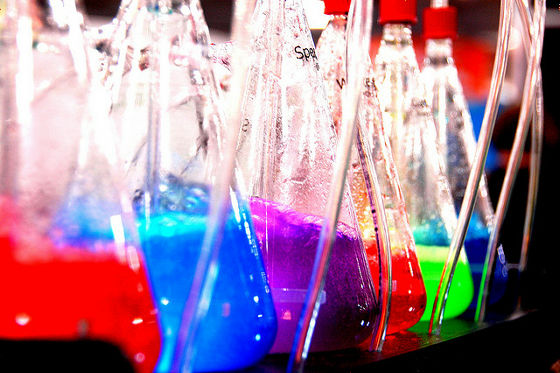
ByAndreas Kristensson
Regarding this point,New York UniversityA team of researchers measured the aesthetic experience. The research team scanned the brain while showing subjects various paintings and asked them to evaluate which picture likes how much from 4 to 5 levels. The point of this research is that, even when evaluating in 5 stages, when "like" reached the highest value, in the brain, a different event occurred in the brain. Immersed in experience, the brainDefault mode networkIt was in the state of.
Default mode A network is an activity state occurring in a dormant brain. When reacting to what happened in the outside world the activity becomes smaller and it becomes active when immersed in the inside world. A research team at New York University said about the research results "Although the joy of experiencing art will increase in stages, experiences will change qualitatively on a single line, something will happen, It triggers to immerse into the world that it is, causing the state of the default mode network. "
In other words, art and artworks of the outside world trigger, and people immerse in the inner world and become "default mode network" state, and scientifically measure "transcendental experience" It is possible to do.
◆ Does knowledge in the head help to "understand beauty"

ByJess Ruby
A new academic field that studies "How the brain feels beauty"Neuroanatomy"Began around 2002, neural aesthetics will help you to understand what aesthetic experience is about. People who are in the field of nervous aesthetics have argued that the brain has "sensory motor circuit" "circuit of feeling and rewards" "circuit of meaning and concept", these three are making aesthetic experience It is that.
Born from the difference between scientific perception and sensory perceptionaestheticsIs sometimes criticized from a scientific point of view "it was made in the 18th century, not conceptual contemporary art", but if three circuits in the brain make aesthetic experience If it is, it differs from existing arts in form and is conceptualConceptual ArtA scientific approach of aesthetics is also possible for. Based on the idea of neural aesthetics, aesthetic experience is caused by "conceptual information" and "emotional reaction" based on knowledge about the work.
On the other hand, you can do aesthetic experience without knowledge. Mr. Chattery who said "There are Aboriginal artworks in at least one articulated thing that I excluded for me", of course, I was pleased when I saw the work of Aboriginal, but the idea contained in the picture It seems that the cultural background was not understood. However, I could get aesthetic experience without conceptual information.
◆ Whatever dishonest thing, does our reaction change if it is said that "This is art?"

ByPete Prodoehl
For example, it is very difficult to give "background" on the shelf of a grocery store at this moment an adequate background and to admit that it is "art". However, until now the nature of art has changed many times, and along with that our reaction has also changed. The Impressionists, including Van Gogh, were not initially appreciated by the people of the Academy of Arts, but they also received great criticism. However, despite the fact that our brain has not changed so much in this 150 years, Impressionists are now one of the most popular works.
Regarding the recognition of art, interesting experiments, which are Denmark, are being conducted. In one group, I told that one abstract picture was drawn on a computer and investigated the reaction when I showed that the other group showed the same picture "decorated in the gallery". In other words, "Mono" is exactly the same and changed only "background", but as a result of examining the reaction of the brain, people who showed pictures when asked "It was adorned in the gallery" It seems that the part which becomes active when feeling joy was reacting.
◆ Do you have a phased thinking process of creativity?

ByThomas Hawk
American psychologistGraham WallaceHe insisted that there are four phases of thought processes for thinking about creative ideas: "preparation period", "warm-up period", "inspiration period" and "verification period". In other words, in order to be creative, you first need to prepare basic skills and elements. Then, after the preparation period, we will settle the problem, but instead of immediately answering, we go through "warm-up period" where things go unconsciously even if no idea appears at first glance. And as analysis and understanding progresses, suddenly ideas come to mind, so-called "AHA experience" occurs. Finally I will be in the verification period to elaborate ideas.
There are many people who believe in the four-step thought process as described above, but it is controversial whether or not the four-stage process will actually occur continuously. However, there is a moment when something happens from the point of view of neurology and a moment such as a magical idea is born. For example, when the above thought process is occurring, the temporal cortex becomes active. In research using electroencephalograms, at the moment when people produce solutions, they are responsible for human vision despite closing their eyesOccipital lobeHe said that he got the result that he acted as if he had perceived information.
◆ How can we be more creative
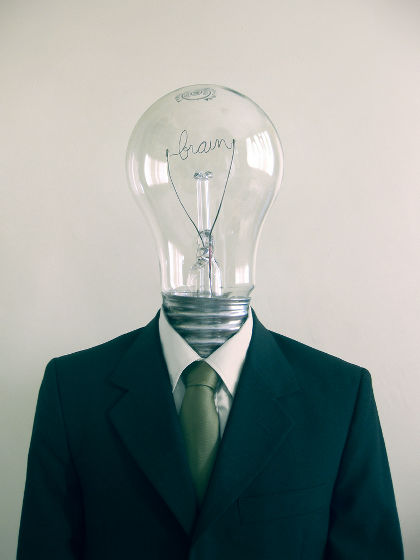
ByMiguelángel Guédez
There is a method called "analytical approach" that tackles things step by step, but what we think as a creative is a way to see problems newly, unlike analytic approaches. And in the creative approach "time not to do anything" is very important, and the moment when ideas come up often happens when a little consciousness felt somewhat like sleeping and getting through.
Mr. Chattery's concern is that children do not have time to do nothing. Recent children are schedule finely and my time is filled with tasks such as lessons and lessons. Of course, the same can be said for not only children but also adults. Many of us are now being moved by creativity that does not allow "time not to do anything". However, Mr. Chattery said, "It is important to have long-term eyes to being creative."
Related Posts:
in Science, Posted by darkhorse_log

